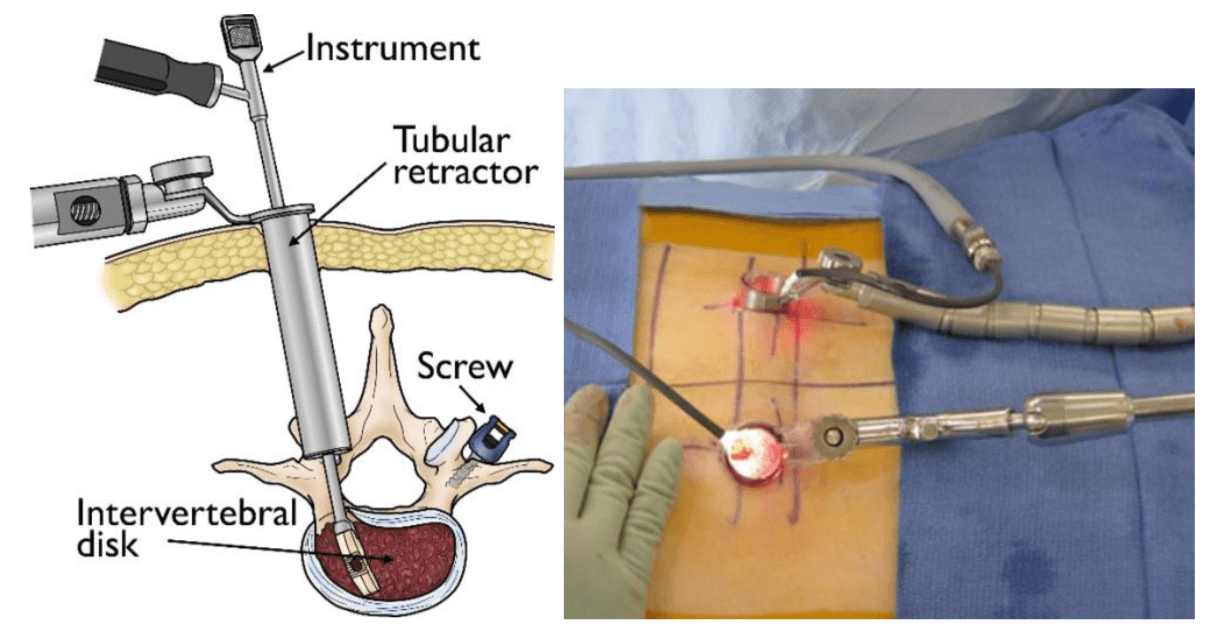Lumbar Spine Surgery in Mumbai
What makes up the lumbar spine?
The lumbar spine is also sometimes referred to as the lower back. But in the case of the lower back, we have to include both the lumbar vertebrae and the sacrum. The lumbar spine consists of 5 Lumbar vertebrae which are numbered from L1 to L5. The lumbar vertebrae is the part of the spine which bears the weight of the upper body including the head and neck, and is therefore designed specifically for weight bearing. These vertebrae are the largest in the spine and they have a thick, wide, kidney shaped, vertebral body designed for weight bearing. The pedicles, lamina, articular processes, facet joints and transverse processes are all bigger and stronger than the rest of the vertebrae which make up the spine.
Below the lumbar spine you have the sacrum, which is made up of 5 vertebrae fused together forming a single bone. The sacrum then fuses with the pelvic bones on either side, at the sacroiliac joint.
In between these vertebrae you get the intervertebral discs, which are rounded structures which act as shock absorbers and flexible pivots for movement. The discs are made up of two components, the outer fibrous part called the annulus fibrosis and the inner gel like substance called nucleus pulposus. The lumbar intervertebral segments are named according to the vertebrae they are found between.
It is the vertebral column in our body which houses the spinal cord. In adults the spinal cord ends at the level between L1 and L2, after which you will find the structure called the cauda equina. Which is a bundle of nerves enclosed within a thick sac of fluid, and resembles a horse tail. The nerves that make up the cauda equina, which control the functions and sensations in the leg, exit the vertebral column through small openings on either side of the lumbar spine called the lateral foramina.
This is what makes up the structure of the lumbar spine, and an understanding of this is important as it helps to get a clear idea of what can actually lead to lumbar spine problems and how to manage these conditions.
What conditions lead to pain in the lumbar spine?
Lower back pain is a condition which plagues people of all ages. And you will find that the majority of individuals have persistent, chronic lower back pain, which they have gotten used to living with. There are many different causes for lumbar spine pain, which include:
In most of the above mentioned conditions it is the spinal nerves which become compressed. These nerves serve to supply the motor and sensory function of the lower limbs. Therefore, when they are compressed, along with lower back pain, most people complain of pain at the back of the thigh radiating to the sole, a condition termed as sciatica.
What happens during lumbar spine surgery?
The main aim behind carrying surgery on the lumbar spine is to relieve the pressure on the spinal cord and nerves which is the cause of the pain and other symptoms that the patient is experiencing.
The different surgical approaches to lumbar spine surgery include:
- Posterior Lumbar Interbody Fusion (PLIF) – where the incision is made on the patient’s back
- Anterior Lumbar Interbody Fusion – where the incision for access to the vertebrae is made on the patient’s abdomen anteriorly
- Transforaminal Lumbar Interbody Fusion – where the incision is made on the patient’s back, but the vertebral column is approached from the side.
- Pedicle screw fixation – which makes use of metal rods and pedicle screws that are used to stabilize the various segments of the spine, and helps to keep the bone cement which has been inserted in place, in order to help the healing process of the bone as well. The rods and screws which are inserted can be later removed once healing is completed and your doctor is certain that your spine is stable. But usually they are not removed unless pinching your nerves.
What are the possible risks and complications of lumbar spine surgery?
As with any major surgery lumbar spine surgery also has its potential risks and complications, which include:
How do I recover from lumbar spine surgery?
The recovery from lumbar spine surgery depends on individual factors. Usually you will have a hospital stay of about 5-7 days, during which you will be introduced to a physical therapist, who will help you with mobility. If MISS procedure done without screws, Usually your doctor will ask you to walk unassisted the very next day following surgery although you will be asked to take things easy for about 4-6 weeks following surgery. If you have been treated with screws, under cover of analgesics, mobility usually starts on 3rd day. Follow-up investigations such as X-rays and other imaging studies will be done in order to determine the success of surgery.




